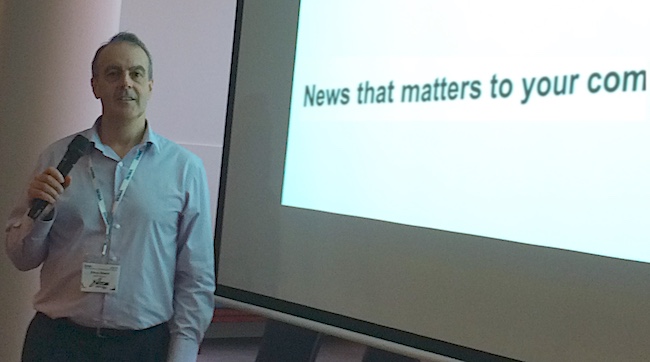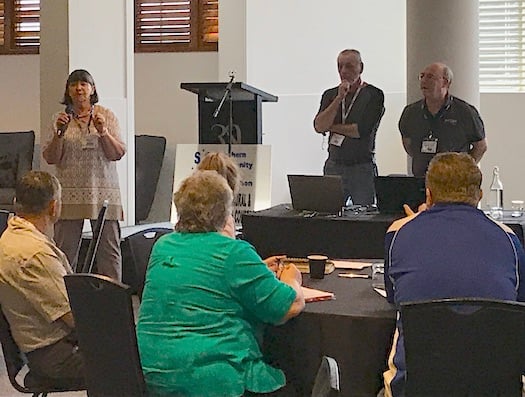The 2019 Southern Community Media Association conference is underway this weekend in Wagga.
On the conference agenda are sessions about managing a non-profit small business, board membership requirements, news, presenting skills, and keeping your station relevant to the community.
This morning a new group sales initiative named Radio Community Marketing Australia (RCMA) was launched to help stations sell to national advertisers through the SCMA.
 In a session titled Your Station, Your Small Business, David Wilson advised on the important points in running a small business, such as board structure and governance.
In a session titled Your Station, Your Small Business, David Wilson advised on the important points in running a small business, such as board structure and governance.
“Passion doesn’t always get you across the line, your skill set does,” he said.
In any board key positions that must be included are:
Finance Director
Legal
HR
Tech/IT Security
“Board members should stop telling people what to do, your role is to bring expertise and governance. This is a thing that brings many not for profits down, the chairman and/or the board members think they can order people around. That’s not what they are there for.
“The role of Chair and directors is policy and portfolio expertise. The role of management is to run the station.”
Other key points from the session include:
Marketing – have a clear purpose and a simple tag line that describes that.
HR – Board members’ role is not hiring and firing, that is a manager’s role. The board is responsible for making sure there is a good working environment, not the details of who is working there and what they are doing.
Governance – Are board members aware of the business structure? Most radio stations are unincorporated associations, this entity owns the assets of your business.
Occupational Health and Governance – directors have a legal liability for the welfare of people who work in your station by creating a safe working environment.
The SCMA provides a program sharing service called PDS.
The delivery system is a web based distribution system that allows members to upload and download programs and information for their use and distribution throughout the membership of the SCMA.
Michael McFeaters, Cassie Hazen and Ray Hazen discussed the benefits of the service. Members can subscribe to the service via the SCMA website
Programs appear weekly when you subscribe. There are not just audio tracks available, any file can be shared via the Wndows program that is installed on one member station computer.
You get one login, the secure system is designed to work on one computer in the station.
Programs are date and time stamped, name of track same folder different dates. Tags are automatically provided by the system.
Direct delivery between two users is also possible. Everything is fully encrypted so files can be uploaded to another station with their permission.
The transfers section of the PDS gives you a list of current downloads. After 7 days programs are no longer available.
At times, specials are also offered that are available for longer periods.
There is also a streaming service available to member stations which provides a live feed from a radio station that can be used by other stations as a sustaining service when they have no local announcers available. Local stations can insert their own sponsorship announcements into the stream. Several format streams are available.
The system works with the station’s main computer by using a default sound card. Everything is synced through the internet at up to 10 millisecond variants.

“Community radio needs to give their community a voice,” stated Steve Ahern in a workshop on local news.
Recent events including yesterday’s student protest show that members of the community want their opinions on important issues represented. They are losing faith in institutions and other media outlets to give them that voice, so community radio has a role to play here.
“The McNair survey shows people listen for local news and local information is of primary importance,” he reinforced.
Many commercial stations are networking more, and local content is reduced including local news and personalities. Who will cover this if not community radio?
Keep your local audience by providing local news bulletins.
- What is local news?
It is what is relevant for your local community today.
- How do we include more local news?
Involve your local community, build the station’s local contacts. For example approach police, hospitals, local council, schools, local sport teams.
- How do you implement a change of news programming policy?
You can’t just do this overnight. Talk to your board to develop a policy. Then put programming decisions in place. Build a station infrastructure so that when you begin you will be able to sustain it.
There is nothing too complex about doing local news if you think it through.
“It’s not difficult, don’t be frightened. You may be the only voice left in the community that can actually do local news.”
Exhibitors:



Reporting; Serena Ahern


